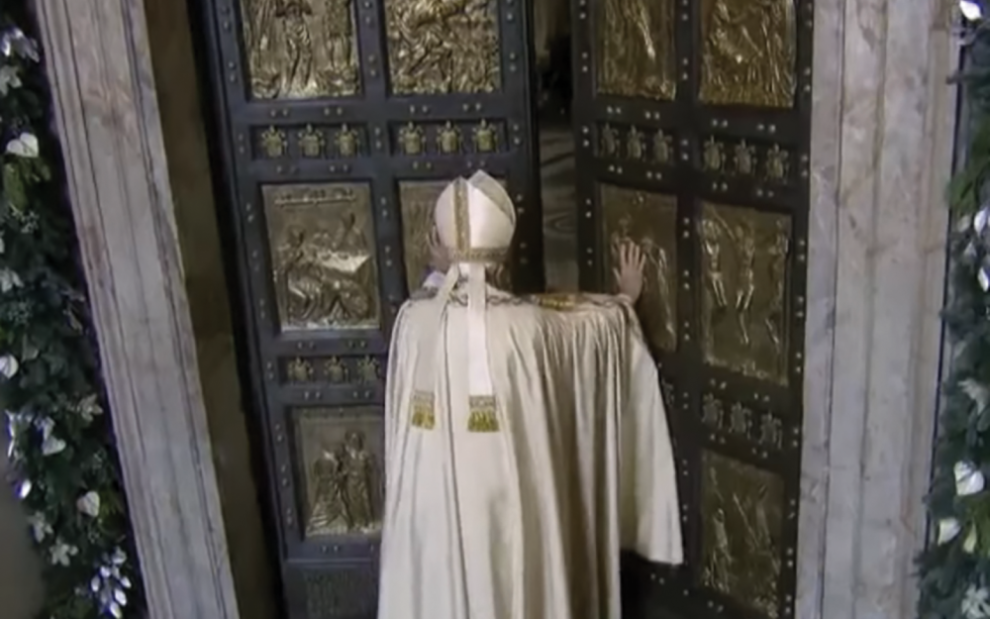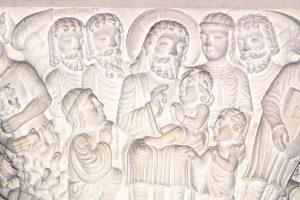Being Catholic used to mean going to church. That’s what Catholics did before the Second Vatican Council, and we did it a lot. Then came Vatican II (1962–1965), with its waterfall of new ideas and practices. We had to learn how to be Catholic again.
Most of all, we had to embrace the idea that church isn’t about going to church: The church exists for the sake of the world. The purpose of faithful living isn’t to perfect my act or save my soul. It’s about sharing good news. Not by yammering about the gospel or dragging friends and strangers off to Mass. If God’s love is for real, it should be made real to everyone. That means giving everyone a share in our joy.
Cue the hard work here. Sharing joy isn’t about throwing parties—though I’m always up for a party. Sharing joy is about full investment in what makes for joy all around. Things like working toward a just society, promoting a peaceful world, being a healing presence, respecting all lives, eradicating poverty, and cherishing our common planet. Now, that’s the kind of party our world could use! Churchgoing prepares us to be that kind of people. It prepares us to be, frankly, saints. And yes, the church provides sacraments and moral instruction for that. But it also opens avenues to ponder the purpose of our being here.
And there’s more pondering ahead: 2025 is another Jubilee Year, folks. The theme will be “Pilgrims of Hope.” In a time when so many are anxious, angry, fearful, and cynical, how do you and I travel through our days as hope-bearers? Pope Francis is so serious about this upcoming Jubilee that he’s asking us to spend this present year, 2024, in prayer and preparation. Because this is an especially serious time in history, when the fate of the planet will be decided by what all of us choose to do next.
It’s easy to playact our Catholicism, wearing piety like a garment and shedding it once we leave the church building. We imagine some hours to be more sacred than others, some places more hallowed. Yet the point of observing sacred times and places is to awaken to the radical truth that all times and places are holy. Church, it turns out, is not a place to go. It’s a people arrived. Even when we’re not in church, church is in us.
To prepare a Jubilee mindset, the pope recommended revisiting the four big documents from Vatican II: the Constitutions on Church, Liturgy, the Word, and the World. I know: sigh. Who has time, and who can make sense of these tomes in their peculiar latinized English? Maybe your parish offered “Best of the Council” study nights recently and maybe it didn’t. Maybe you read these documents yourself. Or maybe not. I’m first to admit: These Constitutions are a challenging slog through language no one uses in real life. Good thing the papal police won’t be coming door to door to see if we did our homework.
I’ll do you a favor and do my job at the same time: summarizing the major takeaways from these four formidable texts this year just in case you didn’t read them. (You’re welcome.) Since Pentecost is the birthday of the church, this month let’s consider the “Dogmatic Constitution on the Church” (1964), aka Lumen Gentium in Latin.
What’s in this Vatican II document that every Catholic should know? First, it was supposed to be written at Vatican I. That was the earlier Council held in 1869–70. But Vatican I got bogged down in matters like defining papal infallibility and never got to defining the rest of the church. Then the Council was cut short by war and the imprisonment of the pope in Vatican City and the usual historical drama. Martin Scorsese, where’s the movie?
A century later, Vatican II got back to this idea of describing the church to itself. Lumen Gentium became the framing document for the whole Council. It bears the weight of everything else the Council did—because if you don’t get church right, you can’t get anything else right. The first draft, however, sounded like reruns from Vatican I: clerical, juridical, and triumphalist—according to a bishop who was present. The writers were sent back to the drawing board.
Two drafts later, a vision of church emerged that started to sound like it could be Light of Nations—what Lumen Gentium literally means. It kicks off by acknowledging that Christ is the Light of Nations; the church simply bears Christ like a torch into the world’s darkness. A church that doesn’t confuse itself with Christ? That’s a healthy evolution from some previous iterations.
The next big idea concerns the people of God. This is what makes the final version so definitely not leftovers from Vatican I but a vital recalculation of church for a new era. Instead of leading the definition of church with the hierarchy—pope, bishops, priests—the writers start with the engaging idea that church primarily means the whole assembly. “People of God” became the raging new buzzword, redefining church away from hierarchy and toward the entire assembly for the first time since, oh, Paul of Tarsus.
The concept of God’s people gets even more expansive here, creating space for all people of good will. God’s people includes other Christians—and are connected to those who worship God by another name—even people who don’t know God by any name at all. Non-Catholic onlookers were astounded by this newly generous understanding. The same hierarchy that insisted after the Protestant Reformation that there was no salvation outside of the church now acknowledged that goodness in any form is “not only saved from destruction but . . . also cleansed, raised up and perfected unto the glory of God.” Forgive the “unto” and celebrate the conclusion!
The writers of Lumen Gentium finally get around to describing the hierarchy in Chapter III—which shows terrific restraint, though they do go on and on. This is probably the least inspiring section if you’re not a bishop. My favorite line about clergy describes priests as the “spiritual crown of the bishops.” Tell this to your closest priest friend and watch his reaction.
There’s a whole section on laypeople. That laypeople were included at all in the church’s self-definition in the 1960s was thrilling stuff. Back then, we lay folk sat placidly in the pews, waiting for grace to be distributed to us by holier hands than ours. Lumen Gentium spelled an end to that appreciation of “our place.” Maybe the best thing about reading this section today is that it seems so dated. We laypeople took our new role so completely to heart that we’ve surpassed Lumen Gentium, and these ideas now sound almost antique.
Since Lumen Gentium was intended to be the framing document for the rest of the Council’s teaching, a lot of other topics are given a drive-by treatment: what it means to be holy, the role of professed religious, and the place of Mary in the life of the believer. Later documents will speak more powerfully to these themes.
Reviewing this 60-year-old Constitution as it stands made me wonder: Did the writers ever dream of synodality, the church’s most recent evolution? In the 21st century, we’re already redefining what it might mean to be church. And that’s a good thing, since the present darkness sure could use some of that “light of nations.”
This article also appears in the May 2024 issue of U.S. Catholic (Vol. 89, No. 5, pages 47-49). Click here to subscribe to the magazine.
Image: Wikimedia/Vatican Media














Add comment